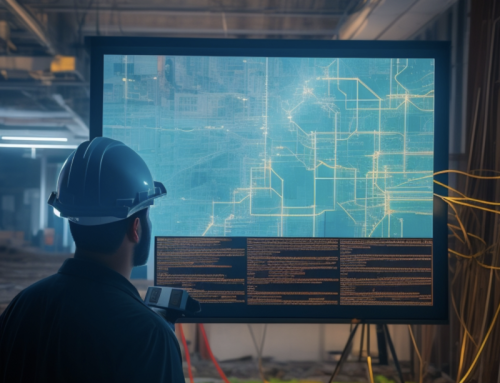A Smarter Way To Pre-Task Plan: Two Superintendents Share their Story
September 6, 2018/by Barry Nelson
A safe work practice starts with pre-task planning. By that we mean a process that is concise, collaborative, and one that helps our front-line leaders engage their crews in daily safety conversations.
Safe and productive worksites need smart daily safety planning conversations, and front-line leaders agree that SmartTagIt is a better way to get them done.
The Problem with Pre-Task Planning
Paper based pre-task planning has become a complex and time-consuming procedure which negatively impacts productivity, lowers worker morale, and fails to engage crews in critical thought about workplace safety.
Instead of being out on the job supporting their crews, front-line leaders are bogged down with paperwork and lose valuable production time distributing pre-task plans to the project team.
The Safety Planning Solution
SmartTagIt saves time and is a more concise way to conduct daily safety plans, which means crews have more time for quality daily safety talks. Safety plans, videos and other relevant information can be readily shared with the GC & the entire project team at the most critical time of the day.
With SmartTagIt, front-line leaders get their work crews ‘switched on’, and drive engagement in their daily safety conversations. Pre-task planning is now a collaborative effort that fosters everyone’s participation in safety discussions, and this is key to safer work practices.
A couple of superintendents have decided to share their experience with SmartTagIt with us, and how it has improved their daily safety planning practices.
The Superintendents’ Perspective of SmartTagIt
We asked two foreman for Porter Mechanical in Austin, Texas (Joey and Mike) to share their experience with SmartTagIt and tell us how it has improved their daily safety planning practices. Here’s what they had to say:
Tell me about the previous approach to pre-task planning and job hazard analysis before you started using SmartTagIt
Joey: “Each morning, our foreman would spend at least 10 minutes completing a generic pre-task plan on paper. This document was then set on the plan table for the crew to individually read & sign. It remained in the work area for anyone on the project to review. Pre-task plans were then ‘turned in’ for filing on a weekly basis.”
Mike: “The foreman or superintendent prints out a copy of the JHA (Job Hazard Analysis), talks it over with guys, the crew signs it, then the document is copied, scanned, and emailed to the general contractor (GC). In addition, a copy must be distributed to each floor of the worksite so that there is one copy available per project crew.”
What were the problems with this method?
Joey: “Paper pre-task plans take too much time to complete. It’s up to the foreman (or the person completing it) to write in all the lengthy details related to daily works tasks, potential hazards, and the steps to avoid these hazards. This is in addition to other documents required for tool inspection.”
Joey also raised other issues with paper-based pre-task plans such as documents are susceptible to damage, are easily misplaced, and cannot be readily shared with the project team.
Mike: “For us, it was a paperwork fiasco. Our JHAs can be up to 12 pages long, back and front. Logistically, it’s not productive to expect the crew to sit down and fully read a document of that size”.
Mike’s team had a pre-task planning process that was very time consuming, which negatively impacted productivity. In addition to lengthy plans, the project stipulated that a copy of the PTP/JHA be available at every floor of the building. The entire process could take up to an hour, so instead of being out supporting the crews, front-line leaders were bogged down with paperwork.
Tell me about the daily pre-task planning using SmartTagIt. What is the process now? What do you like about it?
Joey: “Using a mobile phone app, the pre-task plan is completed and the daily safety talk is video recorded. SmartTagIt already has most of the critical information related to the daily work tasks ready to go, which is a real time saver. And it’s easy to fine tune if you need to.”
Mike: “It’s really the same process, but faster and we now have a digital copy of the JHA.”
With so much content to cover in the PTP/JHA, Mike and his crew’s daily safety talks used to focus only on the tasks ahead, with little time left for discussion on the potential hazards and their controls. SmartTagIt’s more efficient approach to completing the JHA has freed up valuable time for quality conversations about what matters most… the hazards and how they can be avoided.
Has it solved any of the problems with the old method? If so, how?
Joey: “As soon as it’s completed, the pre-task plan is automatically emailed out so there’s no need to stop work to go and get the PTP”.
In discussion with Joey, he added that there’s no paper to misplace or damage and being digital, it’s extremely easy to retrieve at any time. Critical information about daily work plans and any changes that invariably happen throughout the day can be communicated in real time.
Mike: “It’s much, much faster. The pre-task planning process has been reduced from up to an hour to about 5-10 minutes.”
Has it changed your daily safety conversations with your crew?
Joey: “With such a small crew there’s not been much opportunity to get workers contributing to discussion on potential hazards. I have found they are not really taking the initiative as much as I would like, which might be because they are not comfortable speaking in front of a camera.”
Joey mentioned that this approach to safety planning is still new to his team, but he believes that video conversations will foster better engagement in the future as his team adjusts to the new process.
Mike: “The video conversation forces crew leaders to actually engage their crew. I am more able to get our manpower engaged and it’s an opportunity to get their buy in. Sometimes, the guys raise an issue that you don’t see.”
Would you want to go back to the old method?
Joey: “No.”
Mike: “A strong no.”
If a colleague asked you about what you thought of SmartTagIt, what would you say?
Joey: “I would highly recommend SmartTagIt. It’s a time saver and easy to use.”
Mike: “I would definitely recommend it, for all the reasons I talked about.”






